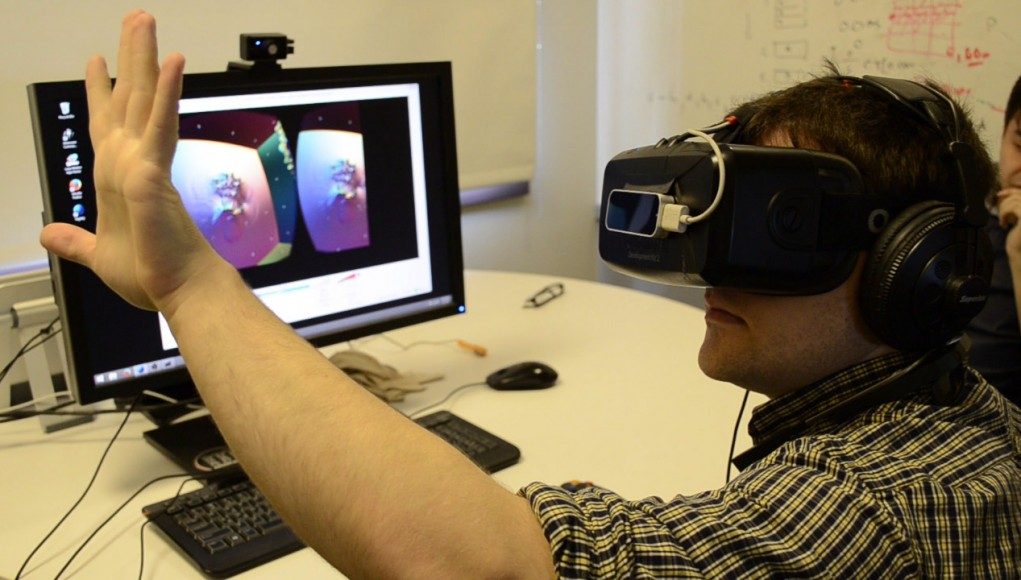Mozilla is making impressive progress in bringing virtual reality to the web. Today I got to see a surreal new experience that makes use of the Oculus Rift and the Leap Motion directly in the web browser using Mozilla’s latest web VR developments.
Mozilla’s MozVR team is working to make VR a first-class citizen on the web. From humble experiments seen toward the end of 2014 the team is working swiftly. The latest web VR glimpse I saw impressed me in general—not just as a ‘VR on the web’ experience.
The experience I’m talking about is called Rainbow Membrane. It’s hosted directly on the web. There’s nothing to download (save for having Firefox configured properly), you just visit the Rainbow Membrane webpage and your Rift and Leap motion will work as you’d expect.
The demo was created by WebGL artist Cabbibo. It makes use of Leap Motion’s web components, and was ‘webified’ by Mozilla’s web VR work, which enables websites that are responsive all the way from tablet to desktop to VR.
Rainbow Membrane puts you in front of a digital bust. With the Leap Motion, you can reach out to interact with the anodized surface. Although you can’t feel what you’re touching, your input transforms the bust significantly, twisting and warping its shape and colors. It’s so reactive, it feels like you should be able to feel it.
The walls around you appear solid, but graze them with your hand and you’ll see a swirling digital liquid enveloping your palm. All the while, these pokes, prods, and pushes are punctuated by sounds and music that form a chaotic but constrained pattern that you can’t quite put your finger on.
The effect is beautiful and immensely fun. And it blows me away that the experience is running in a web browser. If you’ve got the equipment, drop what you’re doing and go try it right now. Tell me if you can feel the walls.
When I spoke with the MozVR team today, they told me that they want VR on the web to enable experiences just like Rainbow Membrane—those which require very little commitment from the user. No download, no lengthy setup, an in-and-out bite of fun, just like you find elsewhere on the web. And if you don’t like what you’ve clicked, the back button is a tap away, just like you find elsewhere on the web. When you see VR from this perspective, it starts to make a whole lot of sense as an extension of the web with a unique appeal.
We’ll be following up with the MozVR team to learn more about their vision for web VR.







